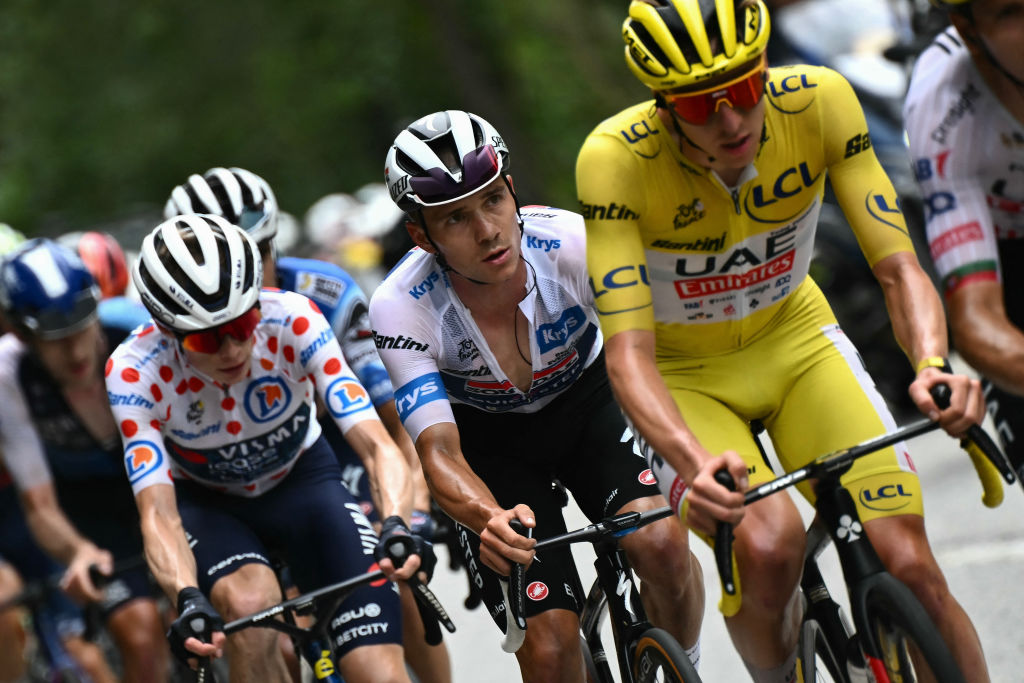
The 2025 Tour de France is another edition designed for climbers, but two time trials and a tricky opening week will keep the overall contenders on their toes. They will have to strike a delicate balance between self-preservation and saving energy for a demanding second half of the race.
The 2025 Tour de France route starts in Lille and includes three stages around the Hauts-de-France capital. Punchy climbs, narrow roads, and the potential for crosswinds will contribute to a nervous atmosphere in the peloton.
While the uphill finishes in Boulogne-sur-Mer (stage 2), Rouen (stage 4) and later kicks into Vire Normandie and to the Mûr-de-Bretagne might cause a handful of seconds of separation in the general classification, the first key stage comes in Caen with the first individual time trial on stage 5.
Caen last hosted a stage of the Tour de France in 2006 with Oscar Freire winning the sprint. This time, the city's millennial celebrations will feature GC contenders like defending champion Tadej Pogačar (UAE Team Emirates), Jonas Vingegaard (Visma-Lease a Bike) and Remco Evenepoel (Soudal-Quickstep) duking it out over 33km in the individual time trial.
The course is expected to be flat and fast, giving the time trial world champion Evenepoel an edge in a test 8km longer than the stage he won in 2024 by 12 seconds over Pogačar. All things being equal, the stage might only give Evenepoel a few seconds more of an advantage and will be a minor day of racing for the top riders, but it will certainly thin out the list of remaining contenders.
Punishing Pyrenees
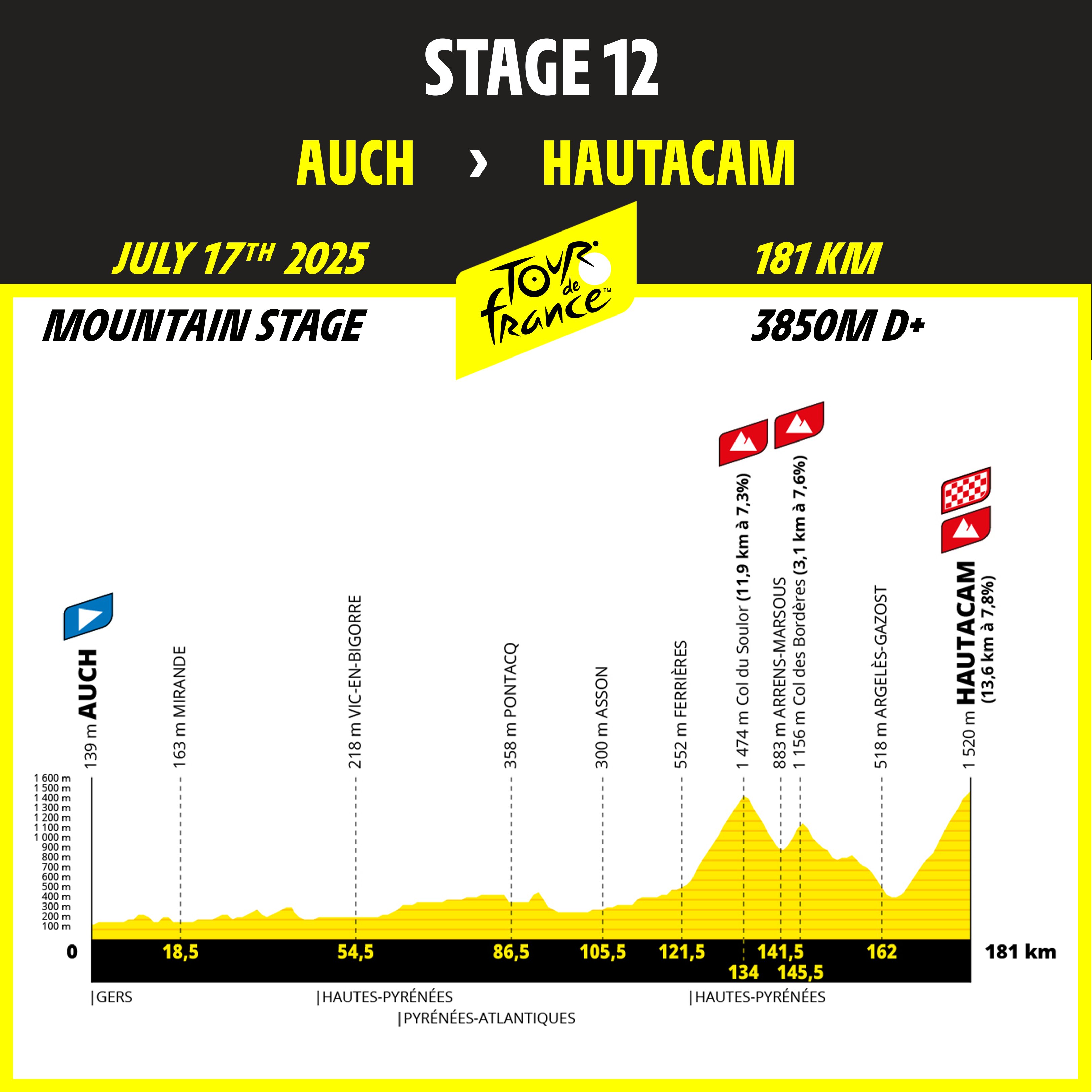
The first climbing stage for the Tour de France contenders to be seriously concerned about is stage 12 to Hautacam, which starts off a punishing trio of stages in the Pyrenees.
Visma-Lease a Bike were pleased to see the inclusion of the ascent, which last featured in the 2022 Tour de France where Vingegaard carved out another 1:04 on Pogačar en route to his first Tour victory.
Other winners on Hautacam include Vincenzo Nibali during his 2014 victory and Bjarne Riis as part of his 2006 win. It's a make-or-break ascent beginning with the sudden narrowing of the road that signals the start of the climb. Positioning will be the first battle but the more important obstacle is the constantly varying gradients.
The climb averages around 8% but with grades of up to 15%, there is no room for riding a steady tempo – a feature that favours punchy climbers like Pogačar and Vingegaard over those who prefer a steady grind like Evenepoel.
Mountain time trial
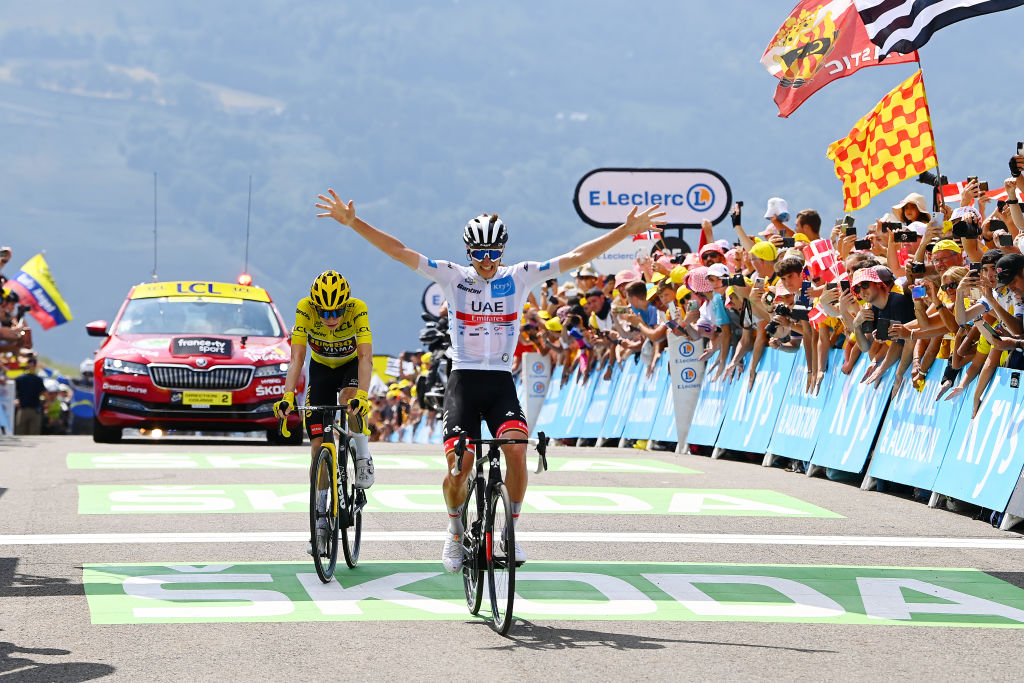
Tadej Pogačar might be happy to see the return of a true mountain time trial after his commanding performance in the more extended mountainous test in Nice that closed out his 2024 Tour victory.
The 11km stage to Peyragudes features the same climb where Pogačar out-sprinted Jonas Vingegaard on stage 17 of the 2022 Tour de France. The stage finishes at the Altiport made famous by the James Bond movie Tomorrow Never Dies.
There might not be fiery explosions at the altiport next July, but there will be violent efforts from the top contenders as they tackle the 8km of relatively steady grades before the inclines kick up at the summit.
Echoes of Hinault vs LeMond at Superbagnères
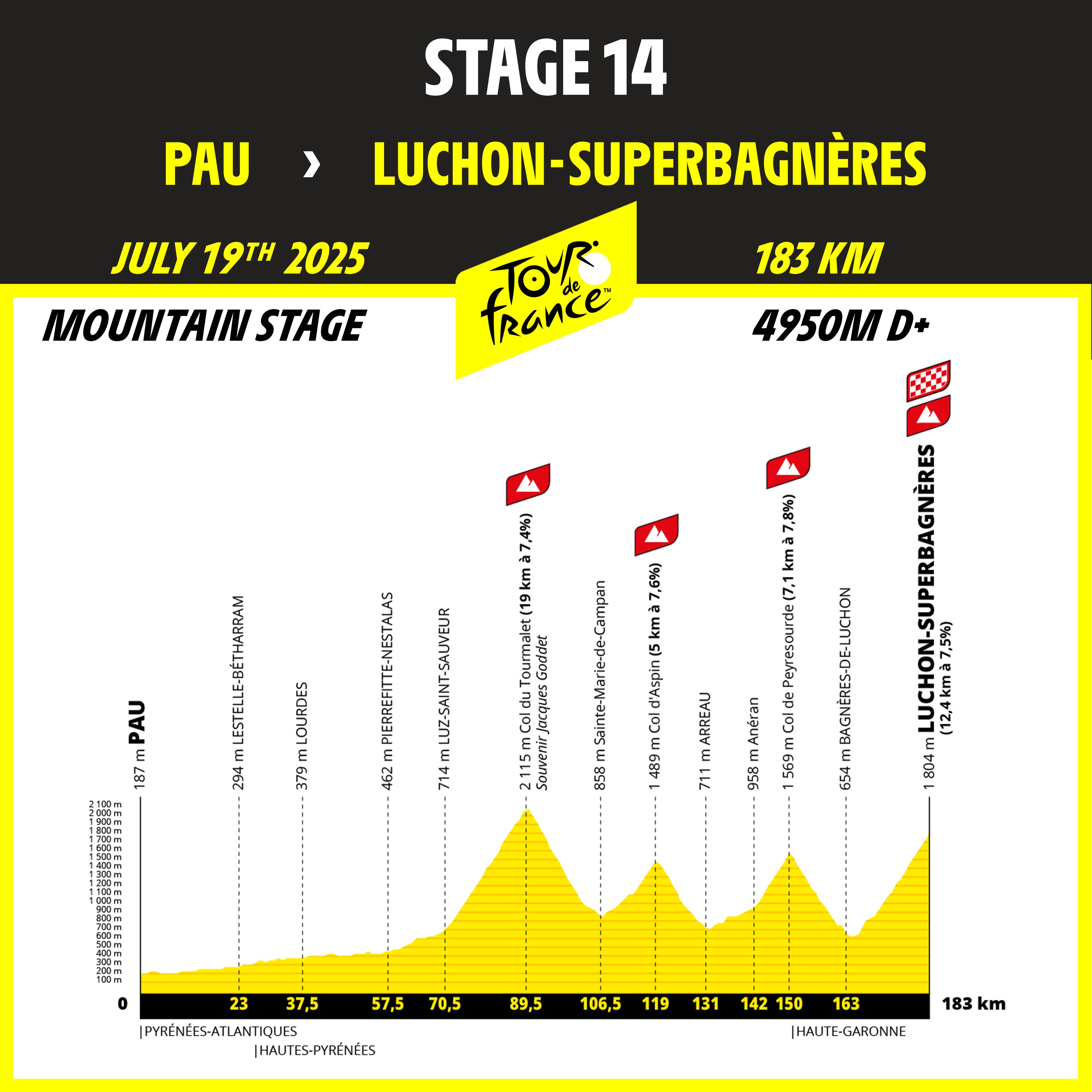
One of the most intriguing stages of Tour de France history came in 1986 when teammates Greg LeMond and Bernard Hinault battled on stage 13 from Pau to Superbagnères.
Hinault, who had attacked the previous day, tried to leave LeMond behind but spent too many bullets traversing the three major climbs leading up to the final ascent and ended up losing 4:39 and the Tour de France instead.
That moment of history should serve as a reminder of how demanding the Pyrenees can be when riders tackle almost the same route in 2025's stage 14.
Riders have to climb the Col du Tourmalet, Col d'Aspin and Col de Peyresourde before descending into Luchon and then heading up to the Luchon-Superbagnères ski station.
Like Hautacam, there will be no time to settle into a rhythm as even the early kilometres are riddled with gradient shifts. There are numerous hairpins and short sections of 10 to 12% mixed in with gentler stretches amounting to an average grade of 6.8% over 17.2km. However, the final 5km are the hardest with the steepest kilometre of almost 10% right at the end.
It's a brutal day of racing that comes with a week of racing still to go.
Ventoux and the Alps
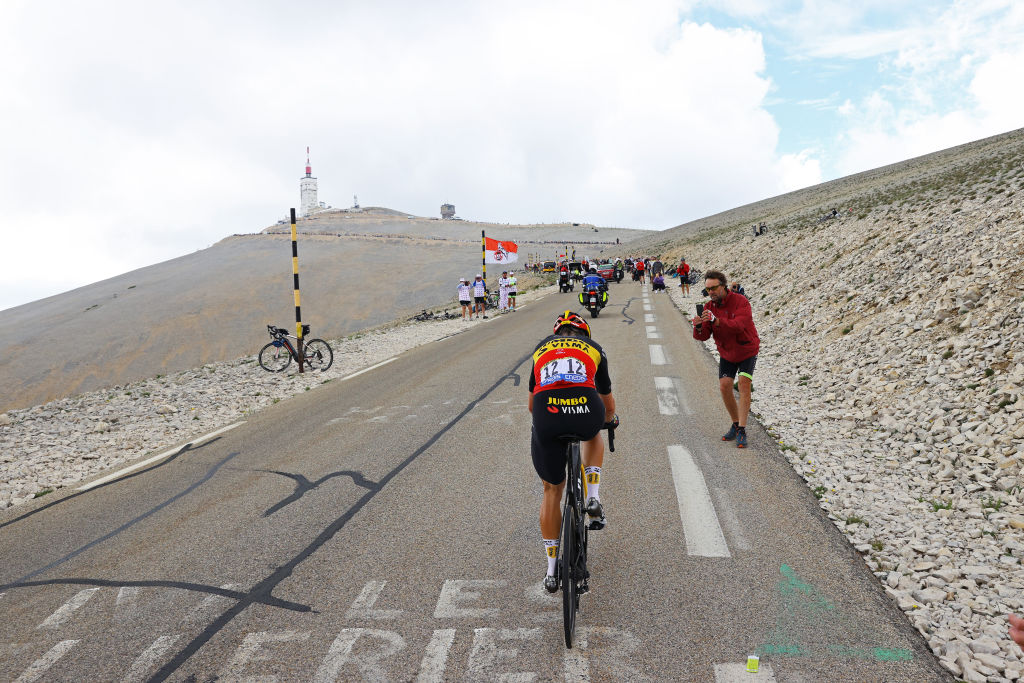
Directly after the second rest day, the riders head from Montpellier to the Mont Ventoux, which hasn't featured as a summit finish in the Tour de France since 2016 when the crowds were so thick that after race leader Chris Froome crashed, he had to run partway up the climb before he could get a spare bike.
The Mont Ventoux starts relatively tamely before the official 15.7km profile begins. The day isn't as brutal as the Superbagnères stage, but the climb has much longer pitches of 9-10% grades.
There is a brief respite at Chalet Reynard before the riders pass the treeline where high winds across an exposed moon-like landscape add to the explosive effort needed to reach the summit.
Col de la Loze and La Plagne
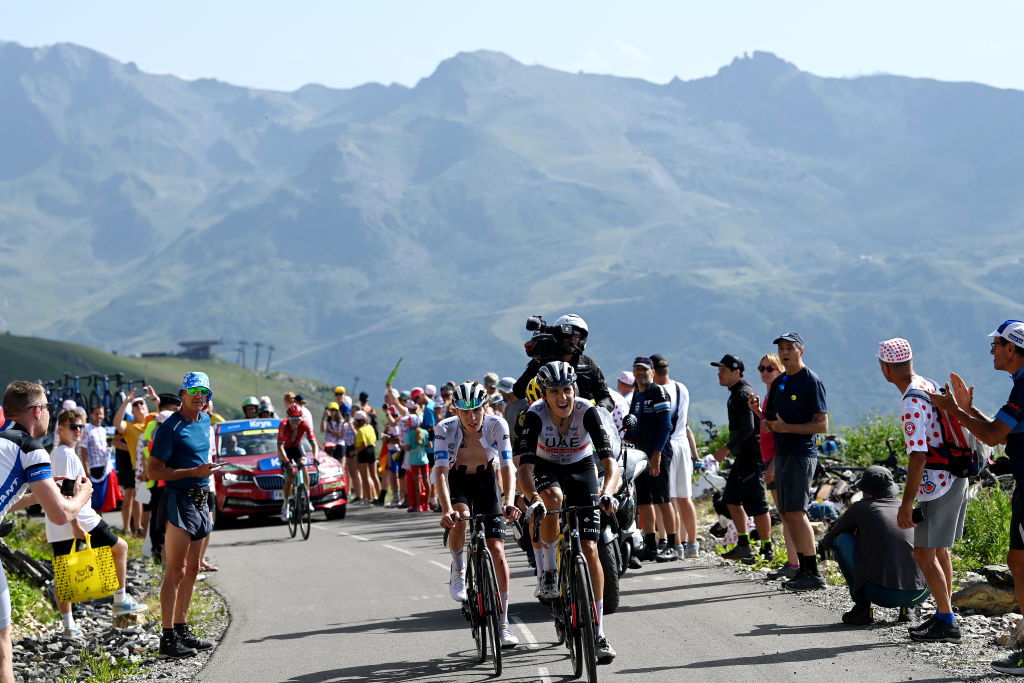
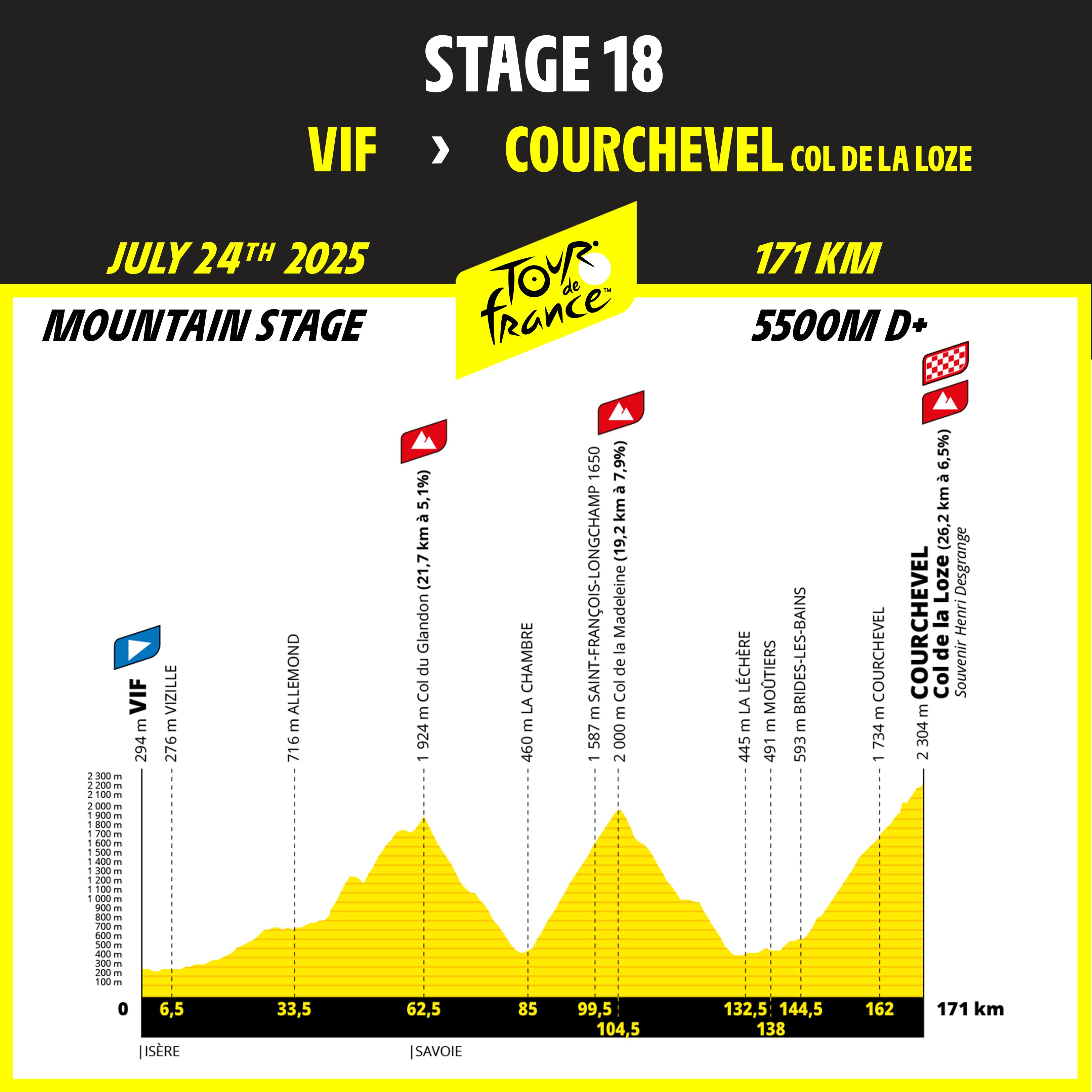
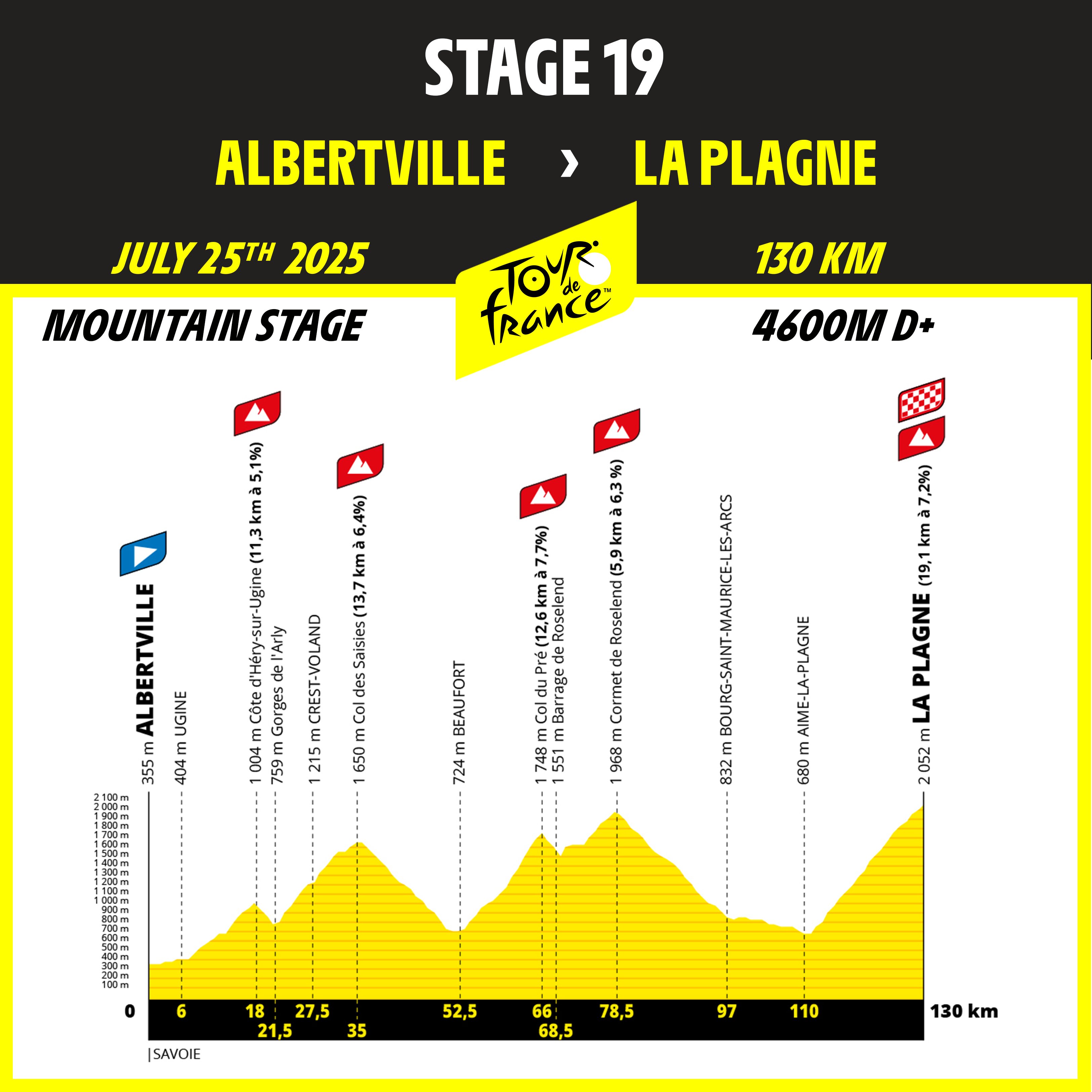
Riders get a break of one stage before they'll be going into the red on stage 18 to the Col de la Loze – the highest point of the 2025 Tour de France at 2,304 metres.
This stage starts with the undulating climb of the Col du Glandon and then goes over the Col de la Madeleine before descending to the valley and turning toward Courchevel for the final ascent – arguably a harder stage than the one in 2023 where Pogačar declared 'I'm gone, I'm dead' before losing his GC hopes to Vingegaard.
This time the race heads up a different route from Brides-les-Bains to Courchevel to what was used in the mountain's 2020 debut and in 2023, bypassing the 20% gradients between Méribel and Courchevel.
The result is a steadier climb of the Col de la Loze that is 26.2km long and averages 6.5%, but there is still a 14% max grade near the summit – at over 2,000 metres, it will really hurt.
Riders have a shorter day to close out the race for the overall contenders one stage earlier than normal with a 130km stage from Albertville to La Plagne and five categorised climbs.
Packed into the short stage are the Héry-sur-Ugine (11.3km at 5.1%), the Col des Saisies (13.7km at 6.4%), the Col du Pré (12.6km at 7.7%), and the Cormet de Roselend (5.9km at 6.3%) before the mad dash to the summit at La Plagne (19.1km at 7.2%).
The final climb hasn't been in the Tour de France as a finish since 2002 so it's new territory for the young generation of contenders. Another relatively steady ascent, La Plagne will be made more difficult by the accumulated fatigue of almost 55,000 metres of total climbing.







